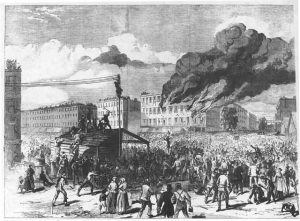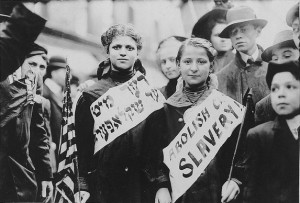The Civil War Draft Riots at 150 – A Public Event

THE CIVIL WAR DRAFT RIOTS AT 150
Remembering and Depicting the Largest
Civil Insurrection in the Nation’s History
MONDAY, JULY 15, 2013 ◊ 6:30 PM
MUSEUM OF THE CITY OF NEW YORK ◊ 1220 FIFTH AVENUE AT 103rd STREET
The New York Civil War Draft Riots of 1863 were the deadliest civil disturbances in American history. At least 120 people were killed during the violent insurrection that exposed deep racial and class division in the city. In recent years historians, filmmakers, and writers have portrayed the riots from a variety of perspectives. On the 150th anniversary of the cataclysmic event that devastated the city, historian Craig Steven Wilder moderates a discussion about the visual and literary representations of the Draft Riots with celebrated documentary filmmaker Ric Burns, novelist Kevin Baker, and historian Joshua Brown of the American Society History Project.
Co-sponsored by the American Social History Project, Gotham Center for New York City History, and the Ph.D. Program in History at the City University of New York Graduate Center. Presented in conjunction with Activist New York.
Reservations required. $6 Museum members, $8 seniors and students, $12 general public
For more information or to register by phone, please call 917-492-3395









